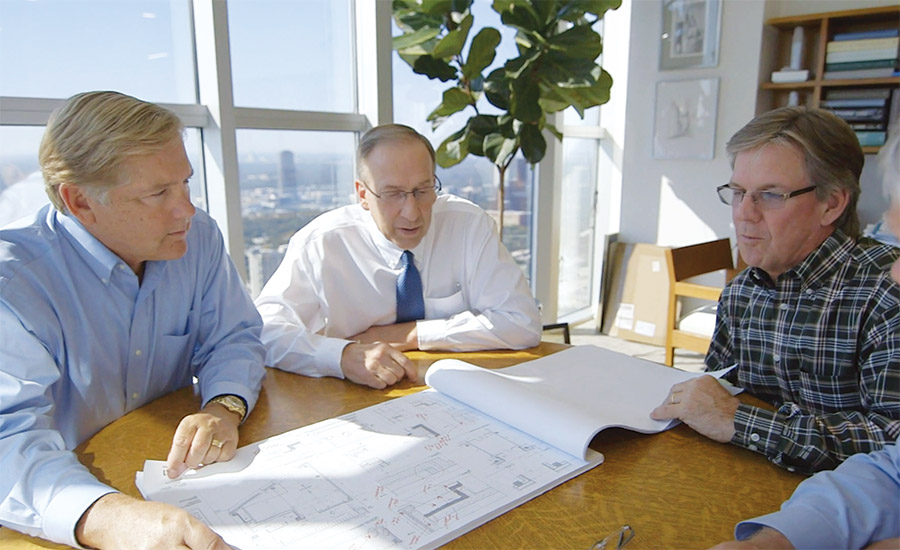Related Article:
Hines, MKA Use Embodied Carbon Guide on Salesforce Tower Chicago
Back to:
25 Top Newsmakers
Embodied carbon is the carbon dioxide (CO₂) emissions associated with materials and construction processes through the lifecycle of a building or infrastructure. In 2019, Jeff Hines and Laura Hines-Pierce, co-CEOs of Houston-based building developer Hines, tasked executive vice president Jerry Lea, who was instrumental in LEED core-and-shell rating system development in 2002 and 2003, to come up with a program to cut the firm’s embodied carbon and help it prepare for environmental and corporate governance.
What eventually emerged from the two-year process was the Hines Embodied Carbon Reduction Guide. “It’s a challenging issue because every market is different with its knowledge of what embodied carbon is,” Lea says of robust construction materials markets from which Hines’s contractors purchase. “We’ve tried very hard to start educating both ourselves and others.”
Hines worked with Seattle-based structural engineering firm Magnusson Klemencic Associates (MKA) to develop the guide that can be used to educate development partners, investors, tenants, clients, design teams, contractors, subcontractors and material suppliers about the importance of reducing embodied carbon.
Many recommendations in the guide involve the biggest factors in a building’s carbon footprint, such as how steel or concrete in its floors is created. That is where the Hines position as a developer and building owner working with major tenants was helpful to convince materials suppliers to join the effort with their own supply chains.
Salesforce Tower in Chicago was designed with the recommendations from the guide in mind. Using 65-ksi steel as its new design baseline, MKA was able to reduce the column sizes in the tower by 30% compared to 50-ksi steel and saved one to three hours of preheat time to help achieve a 9% reduction in steel on the project. Both Nucor, which supplied the Salesforce steel, and ArcelorMittal produce a 65-ksi product, which helped with competitive bidding.
Lea asked MKA chairman and CEO Ron Klemencic and his firm to help with the recommendations for the Embodied Reduction Guide in 2019. “There was this convergence of Hines as kind of the nexus of delivering the technical content to better clients who are asking these questions [about embodied carbon],” Klemencic says. The developer “saw this as a particular moment in time where it could really make an impact.”
Klemencic adds that “not dissimilar to the road Hines had traveled prior to embodied carbon, Gerald Hines, the founder of the company, was a mechanical engineer by training, and through his entire career spent a lot of energy and focus on the energy efficiency of their buildings.”
Today, Hines has added a vice president of carbon strategy, Michael Izzo, who is responsible for leading the developer’s efforts to assess its carbon emissions and create the strategy to set and achieve its science-based targets. He works directly with Lea and the Hines team in shaping the company’s efforts to use its market clout to reduce the embodied carbon in its buildings and achieve other sustainability goals.
“There’s actually someone on the investment committee who’s making decisions based on environmental criteria,” Izzo says. “The second thing in the embodied carbon space, the first iteration of the guide was absolutely great and has created some real waves.” He says that in its next version, the carbon team is going to hire someone dedicated to embodied carbon to look at the long-term strategic vision.






Post a comment to this article
Report Abusive Comment